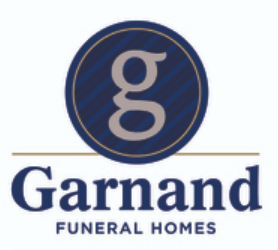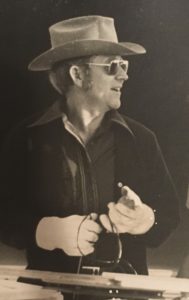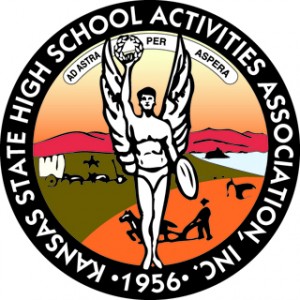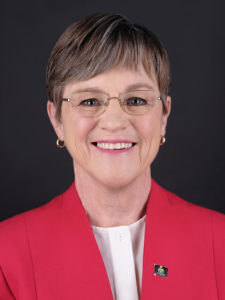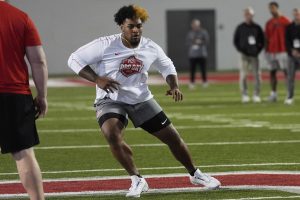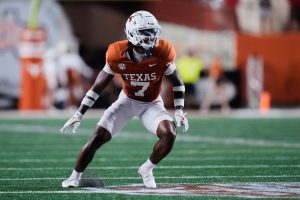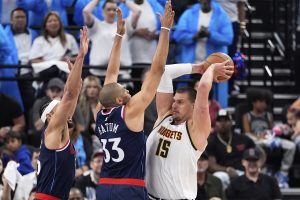Earl C. Whitaker
Earl’s story begins May 30, 1921, in Dr. Bain’s home office in Copeland, KS, where Ada (Baskett) and Lowell Whitaker, along with sister Winona, welcomed Earl Clinton Whitaker into their family. For the next year the family resided in their home two miles east of Copeland, then moved into Copeland. Earl attended the Copeland Grade school for two years. After that his family moved two miles northwest of Copeland and Earl attended the one room country Folsom school west of Copeland. Following that he attended Copeland High School. He and his buddies, Tommie, Leonard, and June Ward, Dean Mills, the Loucks kids, and the Shrauners (to name a few), were a mischievous group with lots of ideas and stunts for Copeland. He was one never to pass up a dare, which is why he climbed the Copeland water tower to stand on his head on top of the small ball at the very top — hands free, of course. Unbelievably, SE Kansas had a Polo team Earl played on – and a good one at that! He came by his need for speed naturally as his father had the fastest horses and motorcycles in western Kansas, so Earl loved fast horses, cars, boats — and, of course, planes.
Earl’s introduction into the world of aviation began as a boy, watching pilots like Clyde Cessna and Walter Beech who flew to Copeland from Wichita in their “Travel Air” plane, and Lloyd Stearman (who was not really a pilot) flying out in an “Eagle Rock” plane, landing in the Waldron pasture. Earl’s job was to help these men raise the tail of their aircraft up. Around 1938 (at about 16) Earl started his flying lessons from a neighbor. His solo flight was off the pasture, and he eventually got his pilot’s license in 1940. But the other side of Earl’s life, we know, was farming. Earl’s father, Lowell, had begun farming in 1912. Earl was a natural and helped him with the farm as well as the equipment. He followed in his father’s footsteps, inventing whatever was needed at the time. He designed and built a loader for combine on the move. They were the first ones to start custom cutting in Western Kansas and Eastern Colorado.
In 1938, Earl left Western Kansas. There wasn’t enough work, and at age 17, Earl decided that he did not want to farm. This was at the height of the “Dirty Thirties”. He hopped a train and moved to California to look for work with Tommy Ward and Custer Littlefield as they followed the wheat harvest. They rode the train through Montana, Idaho, Washington and Oregon, continuing to look for work, until Earl and Custer found work in the winter of 1939 for a couple living in Oregon. The two spent a hard winter, sleeping in the barn and milking 38 head of cows by hand, until they figured out a way to get “the darn” milling machine to work in the below freezing temperatures. While the couple was gone for a few days they decided the time had come to break 12 head of wild horses. Unfortunately, they used all the brand new tack and harnesses to get the job done, but they had the horses working when the surprised couple returned. Earl eventually decided to become a cook, working inside rather than continuing to endure the outside chores. Following that, he got a job at a timber mill “setting chock” (attaching chains to drag trees to the mill pond) and became proficient at running across the river on the logs, rather than going the long way to work. Later that year Earl returned to Los Angeles. At first, he worked construction as a bricklayer building fireplaces for 25 cents an hour. Tommy Ward came back to California and went to work for Lockheed aircraft. Earl went to work for Douglas aircraft, designing templates, layouts and working on hydraulics. He worked on SBP2C aircraft and dive-bombers for WWII, and helped design and solve the problem of engine vibration so the frame wouldn’t crack. Earl and Tommy lived across the alley from Adrian Watson. Watson was on the flight line for test pilots who were testing Boeing PT 38’s and even Amelia Earhart’s and Wiley Post’s plane. It was in 1940, when Watson hurt his back and ended up in the hospital. That’s when Earl met his wife, Betty. It was love at first sight. Betty was a registered nurse at the hospital, and when Earl came to visit Watson, she threatened Watson with an enema if he didn’t introduce her to Earl. Earl promised Watson that he would bring chocolates and nylons (both almost impossible to get during the war) for the nurses if he would introduce him to the nurse, Betty. They met — Watson got his enema anyway — and Earl and Betty were married January 4, 1942. Earl had joined the Navy in 1941 and ended up in the Coast Guard division as they were not separate at the time. In 1947 he and Betty, now with daughter Earleen, moved back to Copeland. Daughter Cheryl (Bates) was born that year, and Bruce came along two years later. Earl swore he would never farm and in fact, his dream was to be a marine biologist or oceanographer (this he just revealed to his family in the past couple of years). However, he made a mistake when he brought Betty out to Kansas. He thought he was safe because she was a city gal and didn’t realize that milk came from a cow (rather than a bottle) until her school visited a dairy. His fate was sealed, because “that darn woman loved the farm life”.
Earl and Betty were involved in all aspects of the farming and spraying business. Both were driving tractors; Betty drove the night and Earl drove the day. Betty had a long career as Doc Thiemann’s Clinic nurse, a surgical and delivery nurse, and also helped run the floor of the Sublette hospital. Betty ran a tight household and kept on top of the business phone, books, kids, cooking and filled in as a truck driver. Earl was out checking fields for bugs, reading up on chemicals, flying and farming. He also spent time in Texas spraying timber. His spraying for the government took him from Colorado to the Mississippi river, North Dakota to Texas. Earl and Betty started the first air ambulance service in SW Kansas. Earl would remove the back seats of his plane and Betty would attend to the patient on the flight as their nurse. They flew to the Houston burn hospital, Kansas City and generally anywhere the patient had to go. Earl maintained a Charter Service and eventually upgraded his aircraft to his beloved Aerostar plane.
After the war, Earl began pursuing his Air-Ag business. A test pilot friend, Bob Sieker flew to Copeland in a Stearman for a visit, and this was the start of Earl’s 65-year career. He bought a modified PT-17 Stearman in Texas for $300 and started the first spraying business in this area. He still had his first plane, a 1938 red Stearman (Popcorn). His business grew to 7 turbine powered Thrush Spray planes; over the years, he has owned over 20 planes. As an instructor, Earl taught many local people to fly. Dorsey Stapleton was his long time pilot, Phil Rice his spray pilot until this year, and Salvador Apodaca his right-hand man until he retired at the end of last year. Earl and Betty shared a love of travel and adventure, and together traveled all over the world. They made many friends in exotic locales, keeping the friendships going and often hosting them back at home in Kansas later on. Earl had a need for speed. He adored fast horses, racing and trick riding in his younger years. He and Doc Thiemann worked on and raced jalopies all over the country. He was one of the first harvesters in this area of Kansas to haul wheat in a semi truck, but he did suffer one mishap when he hit the scale of the Sublette elevator in his first big, brand new truck. He was very unhappy about this and used some very colorful language to express it! Throughout the years, Betty and Earl were involved in farming and spraying legislation and spent significant time in Washington talking to senators, working on legislative committees and attending meetings to educate and protect farmer’s interests. They were very active in Copeland and Sublette communities, as business owners and in community service. Earl was a lifetime member of the Commemorative Air Force. He also belonged to the American Legion, VFW, AOPA (Aircraft Owners and Pilots Association), Confederate Air Force, and was a Mason of 32nd degree. He received numerous awards and recognition for his expertise and innovation. Earl, Roy Malone and Reinholdt Deines were instrumental in organizing the International Aerial Applicators Association, National Agriculture Aviation Association, and the Kansas Agriculture Aviation Association. In December of 2007, Betty Whitaker passed away. Earl continued his work in the years after her passing, farming 2000 acres (mostly irrigated) until the day he celebrated his 94th birthday.
Earl was still collecting achievements as well. He was awarded the very prestigious Wright Brothers Master Pilot Award in 2012. The award is given by the FAA to pilots who have conducted 50 or more consecutive years of safe flight operations, exhibited outstanding expertise and professionalism, and made significant contributions to aviation safety. His name is engraved on a plaque in Washington D.C. Two days before he passed away, Earl was out checking his fields. He had only just recently retired his spraying business. Earl reached the age of 94, and even in his most recent years, he never lost his sense of purpose. He never lost sight of who he was and what he stood for. Nor will the many in this community who knew Earl, loved him, and were touched by his generosity and irreplaceable, unforgettable energy.
Earl is survived by three children. Earleen Whitaker of Denver, Colorado, Cheryl Bates and husband Ed of Sublette, and Bruce Whitaker and wife Joyce of Sublette, eight grandchildren, and three great grandchildren. He is preceded in death by his parents; wife Betty; and one sister, Winona Littlefield.
Memorial service will be held at Copeland Christian Church on Friday, June 5, 2015 at 10:30 AM with Pastor Bruce Titus presiding. Inurnment will follow at Copeland Cemetery in Copeland. Visitation will be at Swaim Funeral Chapel, Sublette on Wednesday, June 3, 2015 from noon to 8:00 PM. with cremation following. Memorials are suggested to the Copeland American Legion, Sublette Playground Equipment Fund, or Halsey Hall Activity fund at Kansas Soldiers Home in care of the funeral home. Thoughts and memories may be shared in the online guest book at www.swaimfuneralhome.com.


